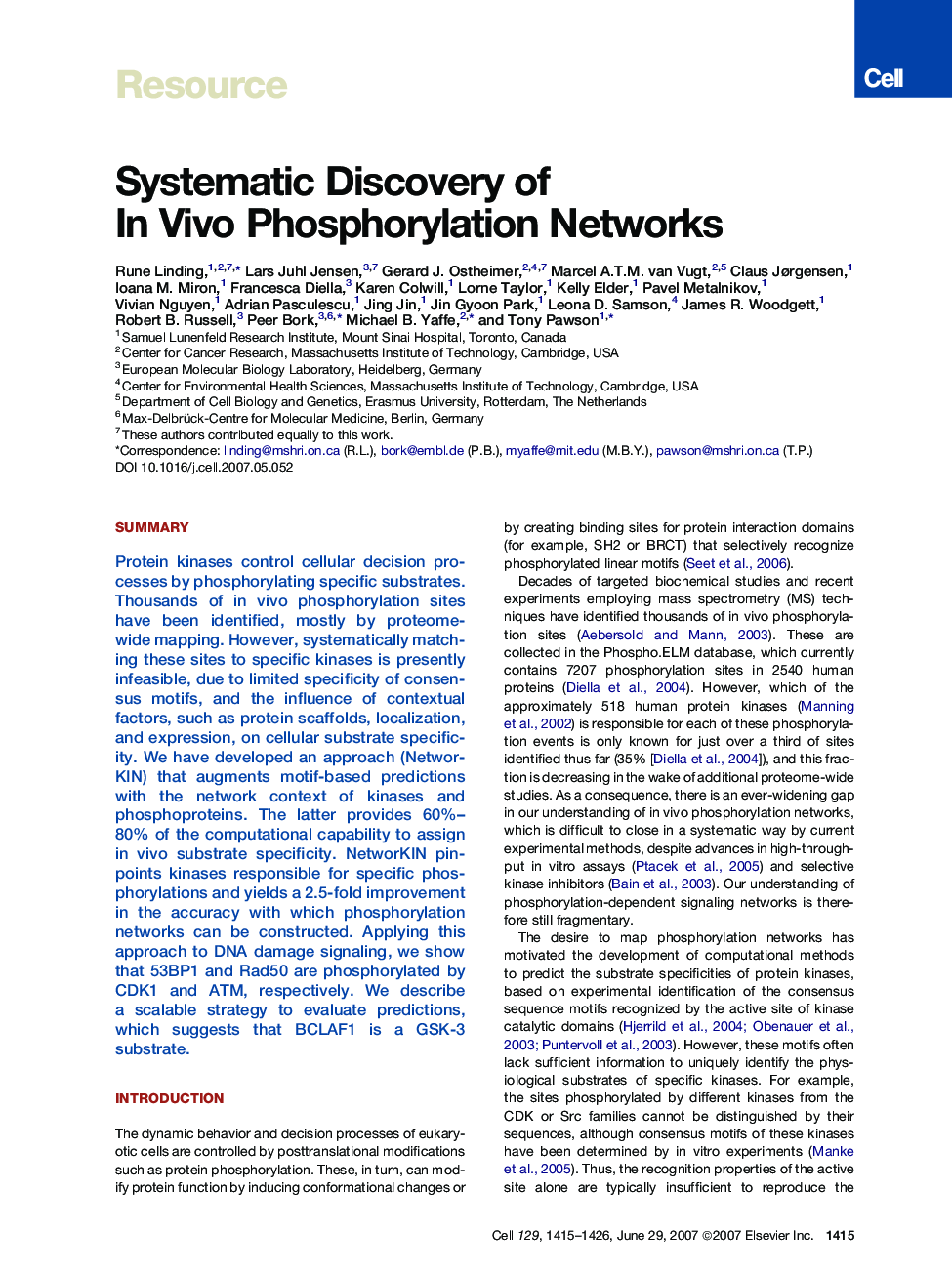| Article ID | Journal | Published Year | Pages | File Type |
|---|---|---|---|---|
| 2037970 | Cell | 2007 | 12 Pages |
SummaryProtein kinases control cellular decision processes by phosphorylating specific substrates. Thousands of in vivo phosphorylation sites have been identified, mostly by proteome-wide mapping. However, systematically matching these sites to specific kinases is presently infeasible, due to limited specificity of consensus motifs, and the influence of contextual factors, such as protein scaffolds, localization, and expression, on cellular substrate specificity. We have developed an approach (NetworKIN) that augments motif-based predictions with the network context of kinases and phosphoproteins. The latter provides 60%–80% of the computational capability to assign in vivo substrate specificity. NetworKIN pinpoints kinases responsible for specific phosphorylations and yields a 2.5-fold improvement in the accuracy with which phosphorylation networks can be constructed. Applying this approach to DNA damage signaling, we show that 53BP1 and Rad50 are phosphorylated by CDK1 and ATM, respectively. We describe a scalable strategy to evaluate predictions, which suggests that BCLAF1 is a GSK-3 substrate.
